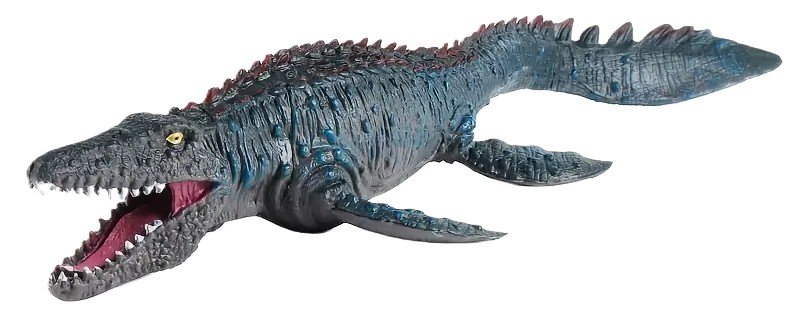
Origins of the Name
The name Mosasaur derives from the Latin Mosa, referring to the Meuse River in the Netherlands, and the Greek sauros, meaning lizard. The first known fossil of this formidable marine reptile was discovered near Maastricht in the late 18th century, leading to its association with the river. The term Mosasaurus, the type genus, was officially coined by the Dutch naturalist Adriaan Gilles Camper in 1799.
Locations and Distribution
Mosasaurs were widespread in the Late Cretaceous period, approximately 82 to 66 million years ago. Fossils have been discovered on nearly every continent, indicating that these marine reptiles thrived in warm, shallow seas. Significant finds have been made in North America (especially in the Western Interior Seaway), Europe, Africa, South America, Antarctica, and New Zealand. These fossils suggest that mosasaurs adapted to diverse marine environments, from coastal waters to deeper offshore regions.
Physical Characteristics
Mosasaurs were apex predators of the prehistoric oceans, ranging in size from a few metres to over 15 metres in length. Their streamlined bodies, powerful tails, and paddle-like limbs made them formidable swimmers. Unlike traditional lizards, mosasaurs had a double-hinged jaw and flexible skulls, allowing them to consume large prey whole, similar to modern snakes. Their conical, serrated teeth indicate a diet of fish, cephalopods, and even other marine reptiles. Some species exhibited scales akin to those of modern monitor lizards, suggesting a close evolutionary relationship.
Archaeological Finds and Discoveries
One of the most famous mosasaur discoveries occurred in the Netherlands, where the first fossil was uncovered in a limestone quarry near Maastricht. The specimen, now known as Mosasaurus hoffmannii, played a crucial role in early palaeontological studies. In North America, Kansas’ Niobrara Formation has yielded numerous well-preserved mosasaur fossils, including those with stomach contents, providing insight into their diets. A notable discovery in 2010 in Angola confirmed that mosasaurs were present along the African coast, challenging previous assumptions about their distribution.
Interesting Facts
- Mosasaurs were not dinosaurs but belonged to a separate group of marine reptiles closely related to modern snakes and monitor lizards.
- Some mosasaurs had rudimentary scales, reinforcing their link to terrestrial lizards.
- They gave birth to live young rather than laying eggs, a crucial adaptation for fully aquatic life.
- Evidence suggests they used tail propulsion rather than undulatory swimming, making them more efficient predators.
- Fossilised remains have been found with bite marks from other mosasaurs, hinting at intraspecific competition and possible cannibalism.
Folklore, Legends, and Tales
In regions where mosasaur fossils have been uncovered, local folklore often attributes their remains to mythical sea monsters or dragons. For example, in the Netherlands, early discoveries were initially thought to be the bones of legendary sea serpents. Similarly, some Native American tribes interpreted fossilised mosasaur teeth as evidence of ancient water spirits. Such myths contribute to the broader cultural impact of mosasaur discoveries, inspiring everything from maritime legends to modern film portrayals.
Links with Astrology and the Chakra System
Although mosasaurs have no direct connection with astrology, their dominant and predatory nature might symbolically align them with the astrological sign of Scorpio, known for intensity and transformation. Within the chakra system, their connection to water and primal power could be linked to the sacral chakra (Swadhisthana), which governs emotions, instincts, and fluidity. The deep-sea dominance of mosasaurs may also symbolise the hidden depths of the subconscious mind, much like the mysteries of the ocean itself.

Mosasaur Collection
Mosasaur Collection
